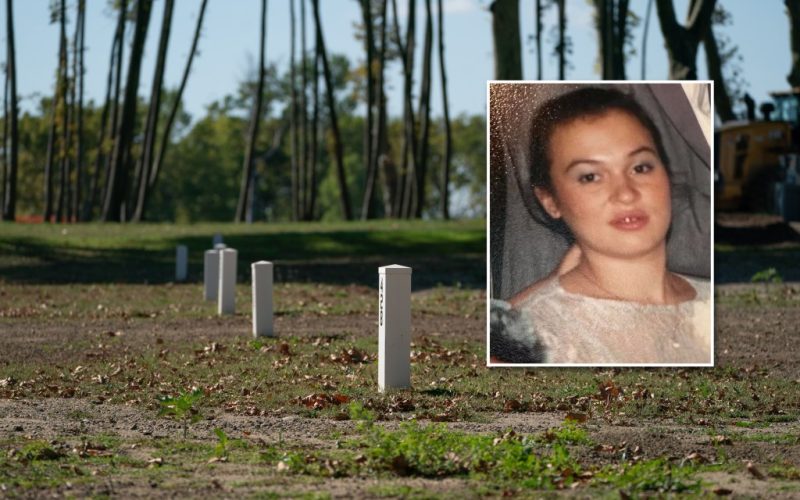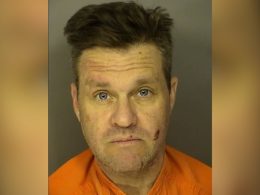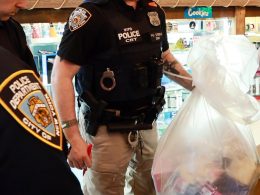The family of a missing Queens woman waited more than three decades to find out she was the victim of a brutal killing. Now they’ll have to wait some more to finally receive her remains — which are buried alongside 1 million other people on Hart Island — New York City’s potter’s field.
Judy Rodriguez’s body was found Aug. 25, 1991, bound at the ankles under a large wooden board in a grassy area off two Queens parkways. Investigators quickly solved the mystery of who killed her but couldn’t answer the key question: Who was she?
And so she was buried on Hart Island in the Bronx, the city’s public cemetery where unclaimed bodies, including the unidentified and the indigent, are laid to rest in mass graves.
Now that genealogical DNA testing has finally put a name to her remains, Rodriguez’s family is hoping to hold a funeral and bury her next to her parents — but that sad final reunion will take time.
“It’s heartwarming to know that we have her back and that somebody paid a price,” Anna Salvadore, Rodriguez’s sister, told the Daily News.
The prospect of locating a Jane Doe buried more than three decades ago on the notorious island is daunting.
Bodies on Hart Island, which is only accessible by ferry from City Island and has served as the city’s public cemetery since 1869, are typically buried in trenches, with caskets stacked atop one another. A granite memorial or, more recently, a pole, is planted in the center of each trench and an online database shows which lot on the island individual bodies are buried in.

“It’s kind of a touchy situation because she’s been there for 33 years. Initially they told our funeral director that it couldn’t be done,” Salvadore said. “It’s a process but it probably won’t be until February or March that we will actually be able to do that.”
The city keeps comprehensive records dating back to the 1970s of who’s buried where on the sprawling cemetery island and exhumation takes two or three weeks, once a request is finalized. Harsh weather or frozen ground can delay the process, according to officials from the city Human Resources Administration. Last year, 88 sets of remains were exhumed.
Because bodies on Hart Island are buried in simple wood caskets without concrete outer containers to repel water it’s possible that little remains of Rodriguez’s body, which was already badly decomposed when it was discovered.
“The medical examiner, she put it this way, that she was confident that they would be able to recover a portion of the remains,” said Thomas DeMarco, funeral director at M. David Demarco Funeral Home in Monroe, N.J. “I would think there’d be at least bones left.”
Rodriguez was 30 when she disappeared. The last time her family saw her was at a party for Rodriguez’s baby daughter celebrating her first birthday in January 1991.
“My mom tried reporting [Rodriguez] missing and because of her drug issues that (Rodriguez) had an arrest warrant, they didn’t put out a police report on her,” Salvadore said.
Unbeknownst to her family, police found Rodriguez’s body eight months after the party in a grassy area at the intersection of the Cross Island and Southern State parkways in southeast Queens.
Her ankles were bound by a cord and a heavy wooden board was laid over her corpse when it was discovered on Aug. 25, 1991, according to the Queens DA’s office.
Her body was in an advanced state of decomposition and investigators believe she was killed six weeks prior to the discovery, placing her murder in early to mid-July, Salvadore said. Unable to identify Rodriguez’s body, police labeled her a Jane Doe.

Still, police managed to find her killers within weeks.
Officials in Queens DA Melinda Katz’s office laid out the details last week of what happened: Rodriguez was approached by four men, who drove her to the intersection. During the drive, two of the men tied her up.
I’s not clear how — or even if — Rodriguez knew the men before the deadly encounter. Investigators believed her history with drugs may have played into their meeting, a law enforcement source said.
“I don’t even know who these guys are that did this,” said Salvadore. “They weren’t friends [with her].”
Once they arrived at the intersection where she was dumped, the men pushed her out of the car and one of them bashed her in the head with a large metal flashlight, killing her, prosecutors said.
They drove away but came back two weeks later and covered up her body with a large wooden board to further conceal it.
Salvadore told The News one of the suspects was arrested after he was overheard discussing the killing at a Carvel ice cream shop.

Though court documents don’t specify which of the men delivered the fatal blow, only one of them pleaded guilty to manslaughter — Robert Miller, who was 20 at the time of the killing. He pleaded guilty in September 1992, was sentenced to up to 25 years behind bars and was released to parole in 2009. He finished his parole in 2016.
Domingo Rodriguez, who was 18 at the time of the killing and isn’t related to the victim, and Glenn Block, who was 19, pleaded guilty to reckless endangerment in October 1992, getting sentences of two-to-seven years behind bars.
A fourth man, Eric Nagy, who was 20, got the lightest sentence of the group, a maximum of four-and-a-half years, after pleading guilty to hindering prosecution.
All this played out as Rodriguez’s family desperately tried to find her while they cared for her three children.
Judy’s mother distributed hundreds of handwritten fliers featuring Polaroid pictures of her missing daughter. The victim’s son, a then 14-year-old Jamal Thomas, obsessively roamed the five boroughs, at first by subway and later by car, hoping to spot his mother.
“Even years later he would ride the subway from one end to the other looking for her,” Salvadore said. “When he got his driver’s license he would drive around different neighborhoods looking.”

A missing poster for Judy Rodriguez (Queens DA).
Salvadore meanwhile turned to her friends in law enforcement, and later social media, to seek clues to her sister’s whereabouts.
“We were looking for years. It was something that was always there,” she said. “It was something my mom always agonized over.”
Her family’s imaginations ran wild with theories, wondering if she might be living a second life with another family or had been abducted into a life of sexual slavery, or even fallen prey to the Gilgo Beach serial killer.
“Over the years you hear stories. The killer at the beach in Long Island and the bodies found, the bones … I always wondered if she was part of that,” Salvadore said. “So many thoughts went through our heads. We just never knew what happened to her.”
But NYPD detectives made the crucial decision to keep a biological sample of her remains for possible future testing as technology advanced. And in November 2023, the Queens DA’s office reached out to DNA Labs International, a private forensic lab in Florida that used advanced DNA testing to put together a comprehensive genealogical profile completed last April.
An NYPD genealogist reached out to Salvadore in June after her daughter registered her DNA with 23andMe and told her that her family might be linked to an unidentified body. The victim’s youngest daughter, Stephanie Rodriguez, who hadn’t seen her mother since turning 1, submitted her own DNA for testing. On Nov. 1 the test results came back positive as a match for Judy.
Sadly, Judy’s mother never learned of these developments. She died 11 years to the day before her daughter was officially identified.
“Three decades ago, four men were convicted for a gruesome killing of an unidentified woman. Though justice was served, the family went 33 long years without any answers about their loved one,” Katz said in a statement last week. “Thanks to our partners at the NYPD and the Office of the Chief Medical Examiner, we have now provided those crucial details, which I hope brings a measure of solace.”
Salvadore said she hopes anyone searching for a missing relative will see her family’s story and submit their own DNA for testing.
“It’s incredible and I think that’s the most important thing I’m trying to get out to people,” she said. “If they have someone missing, go out and get DNA tests.”
She has been flooded with bittersweet relief since learning her sister’s fate and learning her killers faced justice.
“Although it wasn’t a long prison sentence for committing a murder, four people did pay a price,” she said. “You have a Jane Doe and they took the time to convict people of her murder. I find that incredible.”








